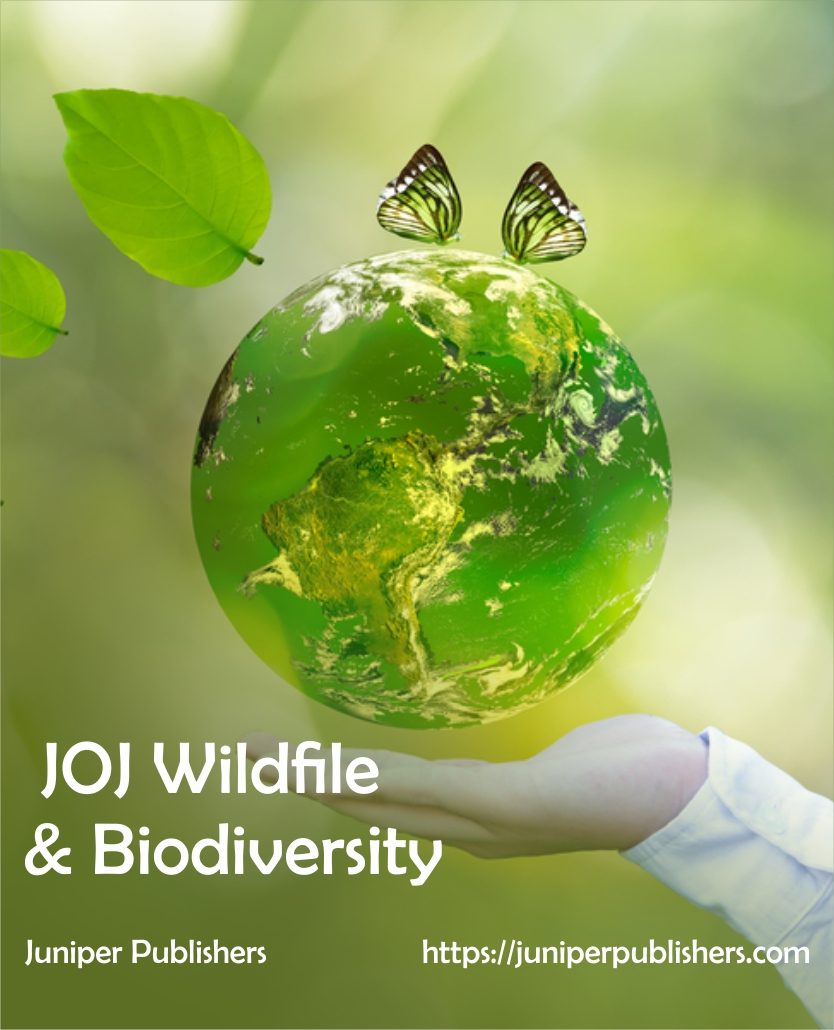Wildlife & Biodiversity
Luiza Lemos Nogueira Martins, Renata Invenzioni*
Coordenadora Ambiental na Energia dos Ventos, Brassil
Submission: October 10, 2019; Published: October 28, 2019
*Corresponding author: Renata Invenzioni, Coordenadora Ambiental na Energia dos Ventos, Rio de Janeiro, Rio de Janeiro, Brazil
How to cite this article: Renata Invenzioni, Wildlife & Biodiversity. JOJ Wildl Biodivers. 2019: 1(4): 555569. DOI: 10.19080/JOJWB.2019.01.555569
Keywords:Ecosystem; Clearing forests; Contaminating soil; Biotechnology; Cloning; Predatory fishing; Frozen embryo; Mammoths; Half-life; Bird dodo; Controversial
Opinion
The coexistence between humans and animals has been the subject of numerous questions, especially regarding their extinction. Considering that the process of extinction is a natural thing in our ecosystem, humans have contributed to the action and greatly accelerated the speed of this process, because over the years, they have advanced preserved areas, inhabiting them, clearing forests, exploring exacerbated natural resources, increased predatory fishing, contaminating soil and water resources and devastating entire areas with pollution. On the other hand, with the advancement of science, and especially biotechnology, there is a new and very controversial topic under discussion. Scientists are studying the possibility of bringing some extinct species back to life through cloning.
The main obstacles in this process would be financial, political and scientific. One of the main financial hurdles is the high cost of reproducing cloned beings. Political barriers, on the other hand, run into ethics because, as a zoo with imprisoned animals is politically incorrect, cloning does not alter this view. And considering the scientific barriers, the mortality rates of cloned animals are very high, which makes it difficult for the species to stay and breed and the age of the frozen embryo, which has a limitation called “half-life”, where the bonds of nucleotides break in half thus shortening the breeding time. Still on the scientific issue, there is a need to find rental bellies to enable the creation of the extinct species. For example, the mammoths. This species that represents the Ice Age, extinct about 12,000 years ago, has the organism very similar to that of the elephant, which would allow its cloning and reproduction.
Penguins, on the other hand, could be surrogate mothers of the bird Dodo, an extinct species in the 1700s.
Moreover, bringing a living being back to life is never an easy decision for scientists. The environmental impact that can be caused, either to the vegetation or to the balance of the food chain, is still much discussed and controversial. This is a new subject in science and will still be much discussed in the coming years. But one thing is certain, humans must support and implement measures to preserve natural environments and ensure that animals and species are not extinct.






























